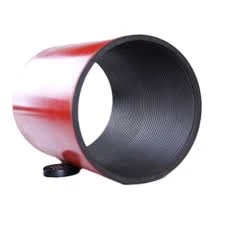- Afrikaans
- Albanian
- Amharic
- Arabic
- Armenian
- Azerbaijani
- Basque
- Belarusian
- Bengali
- Bosnian
- Bulgarian
- Catalan
- Cebuano
- Corsican
- Croatian
- Czech
- Danish
- Dutch
- English
- Esperanto
- Estonian
- Finnish
- French
- Frisian
- Galician
- Georgian
- German
- Greek
- Gujarati
- Haitian Creole
- hausa
- hawaiian
- Hebrew
- Hindi
- Miao
- Hungarian
- Icelandic
- igbo
- Indonesian
- irish
- Italian
- Japanese
- Javanese
- Kannada
- kazakh
- Khmer
- Rwandese
- Korean
- Kurdish
- Kyrgyz
- Lao
- Latin
- Latvian
- Lithuanian
- Luxembourgish
- Macedonian
- Malgashi
- Malay
- Malayalam
- Maltese
- Maori
- Marathi
- Mongolian
- Myanmar
- Nepali
- Norwegian
- Norwegian
- Occitan
- Pashto
- Persian
- Polish
- Portuguese
- Punjabi
- Romanian
- Russian
- Samoan
- Scottish Gaelic
- Serbian
- Sesotho
- Shona
- Sindhi
- Sinhala
- Slovak
- Slovenian
- Somali
- Spanish
- Sundanese
- Swahili
- Swedish
- Tagalog
- Tajik
- Tamil
- Tatar
- Telugu
- Thai
- Turkish
- Turkmen
- Ukrainian
- Urdu
- Uighur
- Uzbek
- Vietnamese
- Welsh
- Bantu
- Yiddish
- Yoruba
- Zulu
tubing and casing
Understanding Tubing and Casing in Drilling Operations
In the oil and gas industry, the terms “tubing” and “casing” are fundamental components in the drilling and production processes. Both are crucial for ensuring the safety, efficiency, and reliability of hydrocarbon extraction, yet they serve different purposes and are utilized in distinct ways throughout the lifecycle of a well.
Casing refers to the series of pipes that are installed in the wellbore after drilling to provide structural support. Its primary purpose is to prevent the collapse of the wellbore and isolate the various formations that could pose risks such as groundwater contamination or blowouts. The casing is cemented in place to seal off the annular space—the area between the casing and the wellbore itself—thus ensuring that fluids do not migrate through the rock layers. Depending on the depth and specific geological conditions, different types of casing may be used, including surface casing, intermediate casing, and production casing, each designed for unique operational exigencies.
Tubing, on the other hand, is the pipe through which oil and gas are produced from the well. Once the casing has been installed, tubing is inserted into the production system to facilitate the flow of hydrocarbons to the surface. Tubing is typically smaller in diameter than casing and is designed to withstand the pressure and temperature of the production environment. It also allows for the installation of various equipment, such as pumps, to enhance the efficiency of production. The tubing can be pulled out for maintenance or replacement, making it a critical component for ongoing production operations.
tubing and casing

The selection of materials for both casing and tubing is crucial. They must be resistant to the corrosive effects of hydrocarbons and other substances encountered during drilling and production. Common materials include carbon steel, stainless steel, and special alloys that can withstand harsh conditions, such as high pressures and extreme temperatures.
The assembly and installation of both tubing and casing involve meticulous planning and execution
. Engineers must calculate the required specifications based on the particular well conditions, including depth, formation pressures, and the characteristics of the hydrocarbons being extracted. Advanced technologies, such as real-time monitoring systems, are often employed to ensure that casing and tubing are placed optimally to prevent operational issues.In summary, both tubing and casing are integral to the successful operation of an oil or gas well. Casing provides the necessary structural integrity and safety, while tubing enables the efficient extraction of valuable resources. A thorough understanding of these components and their functionalities is essential for engineers and technicians in the pursuit of maximizing production and ensuring environmental protection throughout the drilling process. As the industry continues to evolve, innovations in casing and tubing design and materials will likely play a pivotal role in enhancing the efficiency and sustainability of oil and gas operations.
-
Well Casing Extension Couplings – Applications and InstallationNewsJun.06,2025
-
Types of Crossover Subs in Drilling & CompletionNewsJun.06,2025
-
Key Features of High-Quality Tubing Pup JointsNewsJun.06,2025
-
Installation and Maintenance Tips for Steel Couplings for PipeNewsJun.06,2025
-
How to Select the Right Pup Joint for Oil & Gas OperationsNewsJun.06,2025
-
Applications of Stainless Steel Pipe CouplingsNewsJun.06,2025







